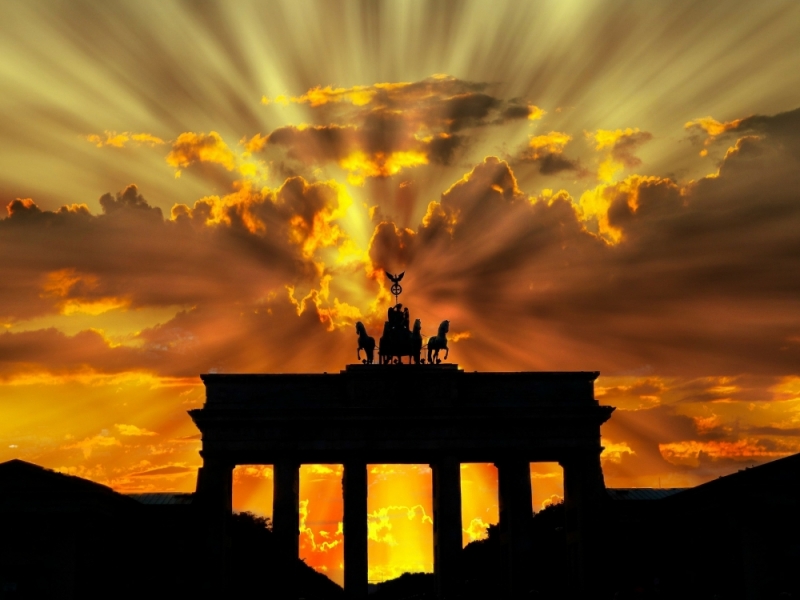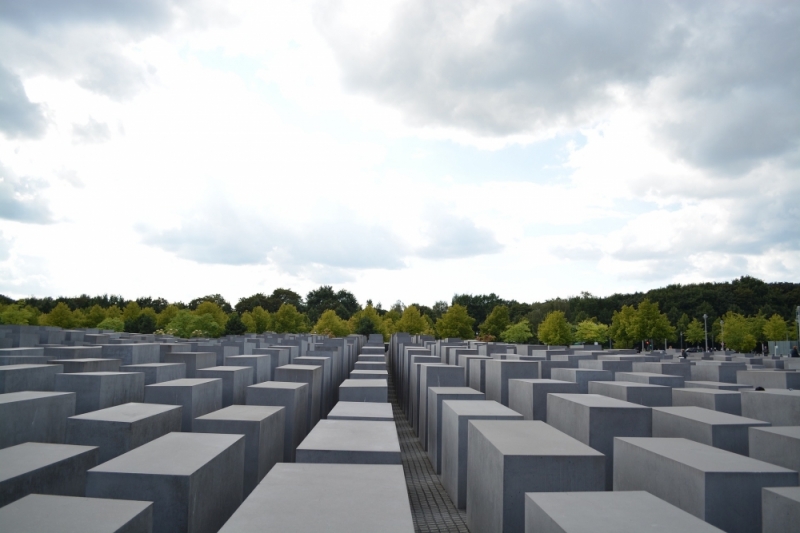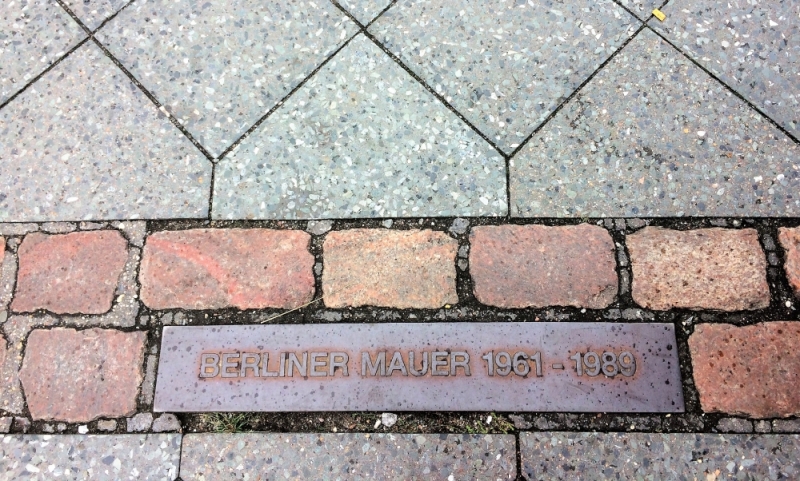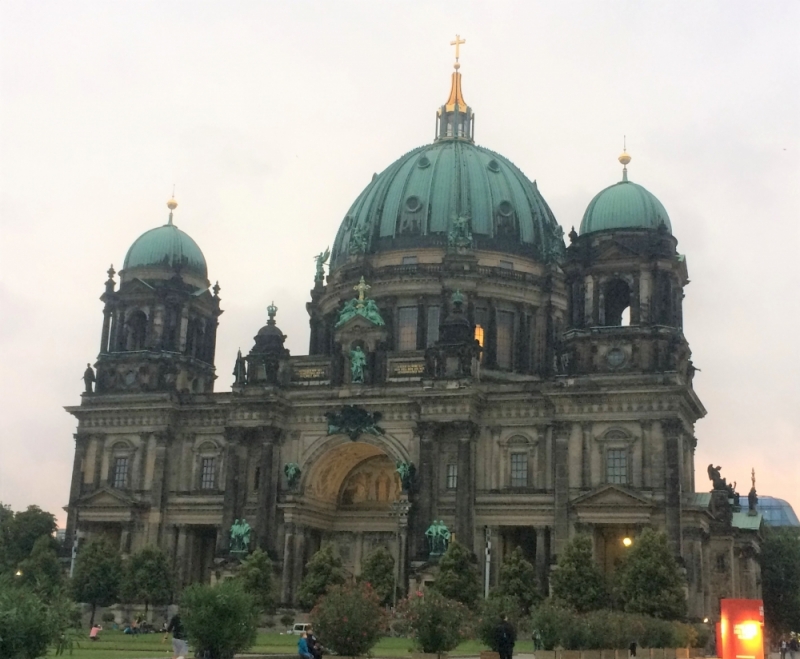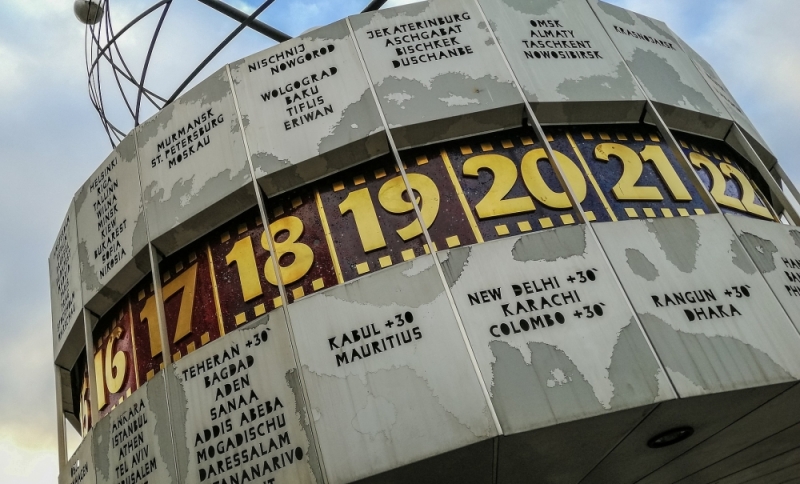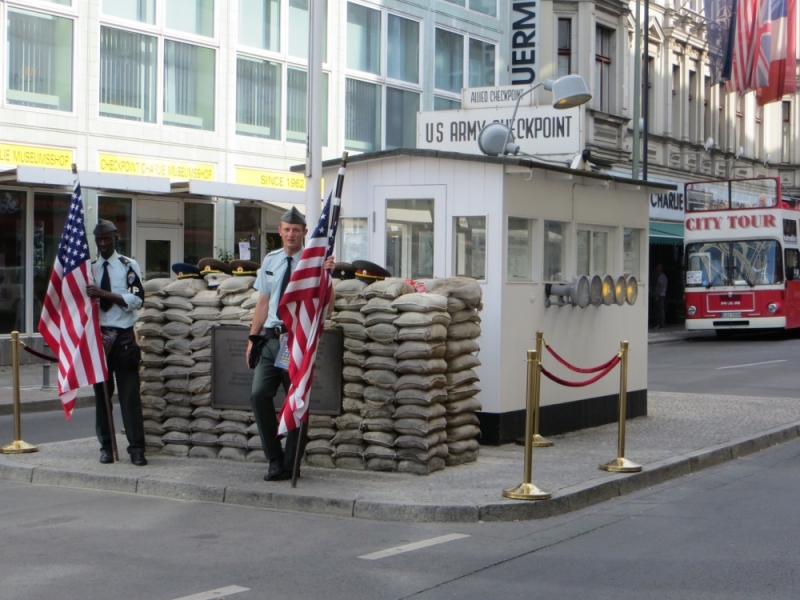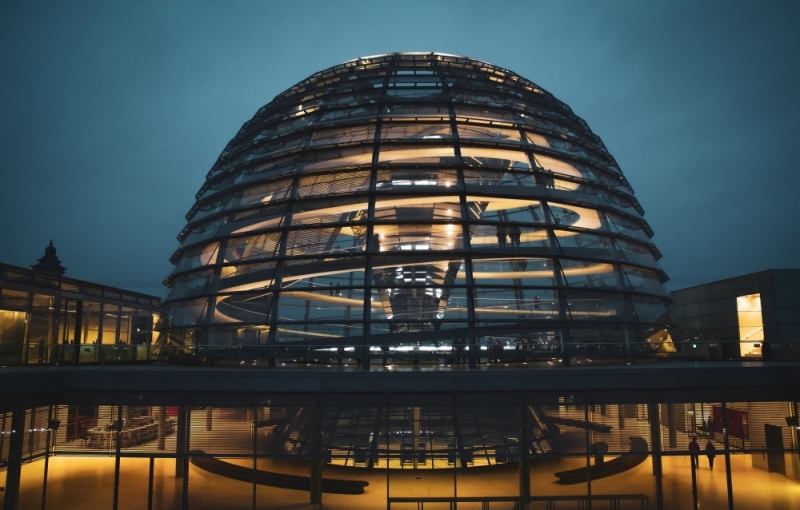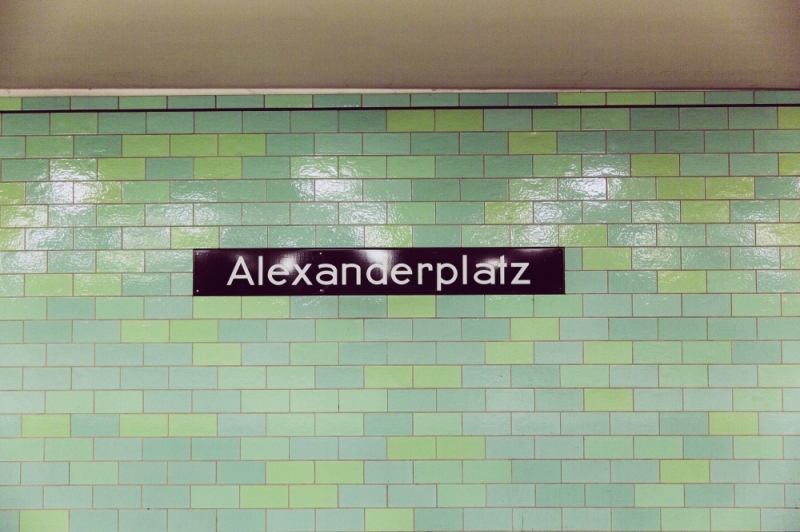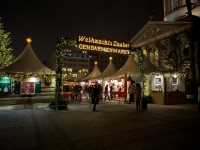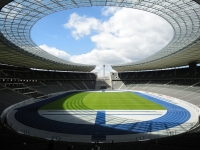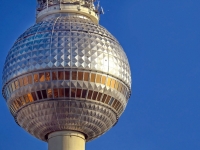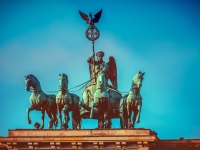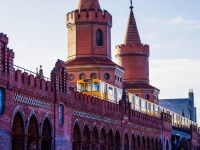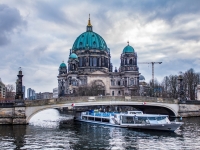Berlin and its origins
Berlin has a recent history, since it can only be spoken of as a metropolis starting from 1871, when, after the unification of Germany, it became its capital.
Although some official documents dating back to 1200 attest to the existence of Berlin, the history of the city best known to us is that between the 19th and 20th centuries, when Berlin became famous for being the capital of Nazi Germany.
Berlin was already the capital of Germany when, in 1993, Adolf Hitler became head of government, or rather, dictator and with his special police forces, the SS and the SA, he started "cleansing actions" eliminating all the enemies of Nazism. It happened that the Reichstag, the German Parliament Building built in 1894, was set on fire under suspicious circumstances and this gave Hitler, who had become Chancellor of the Third Reich, the opportunity to apply a decree that annulled all German political parties, thus starting a real dictatorship.
In 1936, thanks to the Olympics, Berlin became the window onto Germany for all the states that participated in the Olympics and beyond. With his Nazi machine, Hitler managed to organize the great Olympics which made Germany very famous. Despite the racial hatred and anti-Semitism spread by Nazism during the Olympics, Berlin managed to hide its feelings for the entire duration of the Olympics.
After the Olympics, however, Hitler's Nazism and racial hatred, especially towards the Jews, intensified more and more, resulting in what is known as "Night of Broken Glass", when, on the night of 9 November 1938, they were destroyed. many windows of Jewish shops (hence the name Kristallnacht) and all the synagogues were set on fire. The point of no return had been reached, in fact only a few months passed and Hitler invaded Poland, it was September 1, 1939 and the Second World War had begun.
The Second World War was experienced very harshly by the Berliners, since the city, in addition to having to submit to precautionary measures, such as the food card and night blackout, Berlin was often attacked by English planes that bombed the city many times. The worst disaster occurred in 1943, when 50,000 people died in the air battle, known as the "Battle of Berlin", and the Mitte district was completely razed to the ground.
At the end of the war, Berlin was initially under the influence of the Soviets, who first entered the city in 1945. Subsequently, following the treaties of Yalta and Potsdam, Berlin and Germany were divided into two blocs: East Germany and East Berlin were under Soviet influence; West Germany and West Berlin were under the influence of the American, British and French allies.
During this period, known as the Cold War, Berlin lived dark years. Since, being in the area under Soviet influence, the western part, belonging to the allies, was also cut off from the rest of Europe and it was not possible to reach it by land, but only by air, so as not to enter the territories belonging to the 'Soviet Union.
Today Berlin, following the fall of the wall that has divided it for about 28 years, has become a great metropolis, like other European capitals. When the wall began to be torn down in 1989, Berlin was divided into 2 in all respects. West Berlin was a western city where, despite being controlled by the Americans, the economy had developed; there was work, there was freedom, in fact the Germans belonging to the western sector, were considered German citizens, belonging to Germany and / or West Berlin. They had German passports which they could use to travel to all countries, except those of the Soviet Bloc, since the Soviet Union did not recognize German citizens of the west. For the Soviet Union, those from East Germany were still Soviet citizens.
During this period, known as the Cold War, Berlin lived dark years. Since, being in the area under Soviet influence, the western part, belonging to the allies, was also cut off from the rest of Europe and it was not possible to reach it by land, but only by air, so as not to enter the territories belonging to the 'Soviet Union.
Today Berlin, following the fall of the wall that has divided it for about 28 years, has become a great metropolis, like other European capitals. When the wall began to be torn down in 1989, Berlin was divided into 2 in all respects. West Berlin was a western city where, despite being controlled by the Americans, the economy had developed; there was work, there was freedom, in fact the Germans belonging to the western sector, were considered German citizens, belonging to Germany and / or West Berlin. They had German passports which they could use to travel to all countries, except those of the Soviet Bloc, since the Soviet Union did not recognize German citizens of the west. For the Soviet Union, those from East Germany were still Soviet citizens.
What see
Visiting Berlin will prove to be a leap into contemporary history. Yes, because, although World War II has long since ended, Berlin still shows its wounds. Berlin is a tribute, a tribute to Jews, Roma, homosexuals, all those "communities" that have been victims of Nazi madness. There is no square, a street, a monument that is not a tribute to those people who lost their lives in concentration camps. The most important memorial is certainly the one called the Holocaust Memorial , a sort of labyrinth in which, walking between 2711 gray concrete steles which, of different heights and placed in different inclinations, give the sensation of being in a labyrinth of tombs, like if you were swallowed, as you walk between them and you lose your orientation, just as desired by the architect who designed the work, the American Peter Eisenman. Underground, below the memorial, you can complete the route, visiting the Information Point , where you will find the stories of many Jewish families, finally arriving at the Room of Names , where there are the names of some victims of the Holocaust and their biographies .
Porta di brandeburgo e Unter den Linden
A few steps from the Memorial, there is the Brandenburg Gate , one of the symbols of the city and of Germany itself. It was here that West Berlin ended and East Berlin began, in fact if you look at the ground, along the road, you will find that there is a metal strip along the entire perimeter on which the wall stood. The gate, however, has much more ancient origins, in fact it dates back to the reign of William II of Prussia who built it as a symbol of peace. The gate is 26 meters high and 65 meters wide and is supported by Doric columns. At the top is the statue of the Goddess Victoria on a horse-drawn cart. When, during his campaigns, Napoleon managed to conquer the city, he took the statue of the Goddess Victoria as spoils of war and had it towed to Paris. The Brandenburg Gate is a borderline between two important Berlin districts: the Tiergarten , famous for being occupied for most of its extension by the park of the same name and also because it is the district where all the Embassies are located; and Mitte , the district which is the true historical heart of the city. In the Mitte district we find the Pariser Platz , the square which is accessed through the Brandenburg Gate and from which the den denen (under the linden trees) starts or ends (depending on how you will walk it), a path 1500 meters long and wide 60 which was built at the behest of Frederick William I of Prussia, to have a shaded road that led from the Castle to the gate that gave access to the woods where he used to hunt. Along this avenue there are some of the most important Berlin buildings, such as the Opera House , the Neue Wache , a sort of monument to the Unknown Soldier, although it has changed its role several times.
Museum Island and Duomo
Traveling along the Unter den Linden you will cross the bridge that crosses the Spree , the Berlin river. In the center of the river there is an island, known as Museum Island as it houses 5 museums that are part of the UNESCO Heritage. On what is known to Berliners as Museuminsel there are the main state museums: the Altes Museum, the Neues Museum, the Alte Nationalgalerie, the Bode-Museum and the Pergamonmuseum. In all these museums there are works of great historical importance. The Pergamonmuseum , for example, owes its name to the fact that inside you can see the Altar of Pergamum , one of the most important works of Ancient Greece, dating back to 156 BC. C. Also at the Pergamonmuseum, you can also see the Market Gate of Miletus which dates back to the second century AD and comes from Miletus a city of Ancient Greece, which was located on the coasts of Asia Minor. At the Neues Museum, on the other hand, you will find a large collection of artifacts from Ancient Egypt, including the bust of Queen Nefertiti . Instead, the Bode-Museum is the first museum to be accessed by crossing the bridge that connects the island to the mainland. In this museum you will find many works of Byzantine art, dating back to the III-V century AD A few steps from the Museums, near the Lustgarten, which overlooks the Altes Museum , there is the Berlin Cathedral , which was initially built like a beautiful building in Baroque style to be then demolished and rebuilt in Neoclassical style during the reign of William II. During the bombings of May 1944 the Duomo was heavily damaged but between 1975 and 1981 work was carried out on its reconstruction.
Alexanderplatz
At the end of the long "avenue of lime trees" that starts from the Brandenburg Gate, you will arrive in Alexanderplatz , which was the main square of East Berlin. This square owes its name to Tsar Alexander I who visited Berlin in 1805. Here are some important structures, such as the TV antenna, the Fernsehturm which with its 368 meters is the fourth tallest building in Europe and the first in Germany. It is possible to climb to the top of the Antenna, in the sphere building inside which there is a restaurant that rotates 360 ° every hour, allowing those who want to have a meal to enjoy the beautiful view over the whole city . The highest vantage point is 207 meters high. Inside the tower there are 2 elevators that carry around one million visitors each year. Still staying in Alexanderplatz, you will see another very particular structure, we are talking about Urania Weltzeituhr , the World Time Clock, which is located at the foot of the TV Tower. The base of the structure consists of the pavement on which the Rosa dei Venti is depicted, which indicates the cardinal points. From the base rises a column on top of which there is a large drum divided into 24 segments (like the hours of the day). Each of these segments represents an hour and therefore a time zone. At the sides of the segments the hours are indicated and the names of the most important cities are written. At the top there is a "miniature" of the Solar System. The World Time Clock is a very unique work, installed there, in about 9 months, during the government of the German Democratic Republic.
Check Point Charlie
Another borderline between what used to be East Berlin and West Berlin is still visible at Check Point Charlie , a checkpoint located on Friedrichstraße , at the intersection with Zimmerstraße and separating the Soviet Mitte from the US Kreuzberg. Here diplomats, soldiers, foreign visitors were allowed, the passage to who from West Berlin had to go to East Berlin and today it is still possible to see what the checkpoint was like, when it was established in 1961. Here, in 1962 he was assassinated Peter Fechter , a young Berliner who tried to escape to West Berlin by climbing over the wall. Once climbed over the wall, the young man had to cross "the death strip" and climb over another wall, which is only 2 meters high. As he climbed the second wall, Fechter was hit by rifle shots fired by the Soviet border guards. Being in the "death strip", belonging to the Soviet sphere, nobody could intervene from the West and so the boy died, under the eyes of everyone, Eastern and Western, after an hour of agony. Next to the Check Point, there is also the Wall Museum , where the stories of all those people who died climbing the wall to seek freedom in West Berlin are also told.
Bundestag
In Berlin many structures are free or in any case, by going to the various official sites, you will find the times and / or days when access to the museums is free. A building that can always be visited for free, upon registration with an identity document, is the Bundestag Palace or the German Federal Parliament. Indeed, its dome is the second most visited monument in Berlin. Entering is very simple: just register on the official website of the Bundestag, entering the data that will be requested and choosing the date and time of entry. Once everything is done, print the confirmation email that will be sent to you upon booking and take it with you to the entrances where young volunteers will assist you during all the checks that precede the entrance to Parliament. If you are unfamiliar with the computer, you can also make your reservation at the "ticket offices" located at the foot of the building, remembering however that reservations are usually for the following day. Once you enter the building, you will receive an audio guide that will tell you all the history of this building and will describe everything you will see looking at the panorama that will be seen from the glass dome.
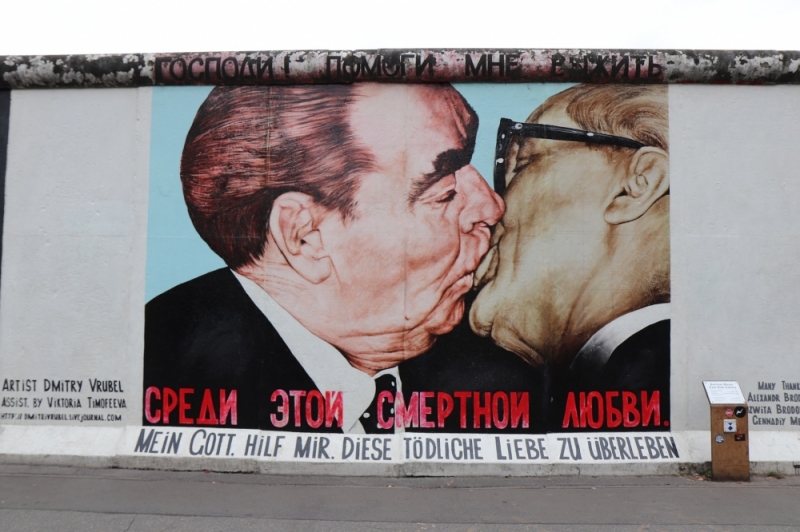
The kiss between Erich Honecker and Leonid Brežnev - Photo by Bernd Marczak from Berlin from Pixabay
East Side Gallery
If you want, going to the Mühlenstrasse area, on the banks of the Spree, you can see a section of the wall that has remained intact. It is a stretch of just over a kilometer, which has remained intact thanks to the fact that numerous artists painted us on about 106 murals inspired by peace, the union of a people after the end of the cold war. This part of the city is known as the East Side Gallery , as the part of the wall you will see was the one facing east, and this gives the gallery its name. The East Side Gallery is the longest open-air gallery and over 100 artists have created many murals, among which there are some very famous ones, such as the kiss between Erich Honecker and Leonid Brežnev. Near the East Side Gallery, there is a beautiful bridge spanning the Spree. This is the Oberbaumbrücke bridge, a double-level stone bridge, built in 1895, which replaced the previous wooden structure of 1724. The bridge that you see today, however, is not the original one, since during the Second World War, for Hitler's order, the bridge was blown up, to block the advance of the Russians. After the end of the war, the bridge was rebuilt but, with the division of Berlin and the construction of the wall, the bridge was no longer viable. From 1991 the bridge returned to being crossed by cars and the subway and is still active.
Lively and fun
Berlin is a city where you can really do what you prefer. A place that really deserves to be visited is the Berlin Zoo, in the Tiergarten district. This is the largest zoo in Europe with over 7500 specimens of 1000 different species of animals occupying its 160 hectares of land. But if you don't want to visit the zoo, but just take a walk, then the Tiergarten district is for you. The neighborhood is almost entirely occupied by the park of the same name which will seem like a wood, so much is its vastness. Tiergarten, however, is also the district of the Embassies and Postdamer Platz is its main square with the towers of the most important German companies based in Berlin. In Alexanderplatz, however, there are many clubs, discos and lounge bars, where you can go wild on the track or simply have a drink. If, however, you are hungry, we recommend Unter den Linden, the final part, which joins it to Alexanderplatz is full of typical German pubs where you can taste the famous pork knuckle or a tasty potato soup, obviously, all accompanied by rivers of beer. Finally, if you want to go shopping we recommend Kurfürstendamm, a 3.5 km long avenue with all the luxury shops, department stores, such as the "Wertheim" department store or the very luxurious "KaDeWe" on Wittembergplatz, a beautiful department store specialized in the luxury trade and located in a beautiful building built in 1905. On the top floor you will also find a beautiful bistro.
If you decide to visit it in winter, the squares of Berlin become beautiful Christmas markets, the famous Weihnachtsmarkt, where you can find beautiful handicrafts and many delicacies to taste, such as the Krapfen, very tasty fried donuts filled with chocolate or cream and sprinkled with powdered sugar, yummy! Finally, also in Berlin, as well as in Barcelona, there is the Icebar. You should try it.
Climate, curiosity and advice
Climate: Berlin is located in northern Germany and is characterized by a continental climate, with cold winters and cool summers. Spring and autumn are the best times to visit the city as you will experience long days, pleasant temperatures and not excessive heat. Indeed, in the evening, having dinner in some outdoor restaurant, you will want to use the blankets made available by the manager, to cover your shoulders. In autumn, it may happen that some rain arrives, but it is not a certainty, also because the rain suddenly arrives throughout the year.
Curiosity : Berlin is a huge city, almost 6 times the size of Paris. Built on a marsh of which the ground is composed mostly of sand and gravel, to avoid the formation of swamps, the waters that could damage the city and its buildings, are controlled by a special system of pipes that you will surely notice in the city. In fact, in your walks, you will notice blue, pink and purple pipes that cross Berlin on the surface, they are those that allow you to drain and check the water level on which Berlin rises on a daily basis.
Tips: Never try to be smart and always pay for the metro ticket because, even if you don't see them, there are the checkers who, in plain clothes, keep an eye on you and immediately notice if you don't pay the ticket. Know that you will not only have a fine, but you will live a bad quarter of an hour. Berliners, and Germans in general, take these things seriously.



